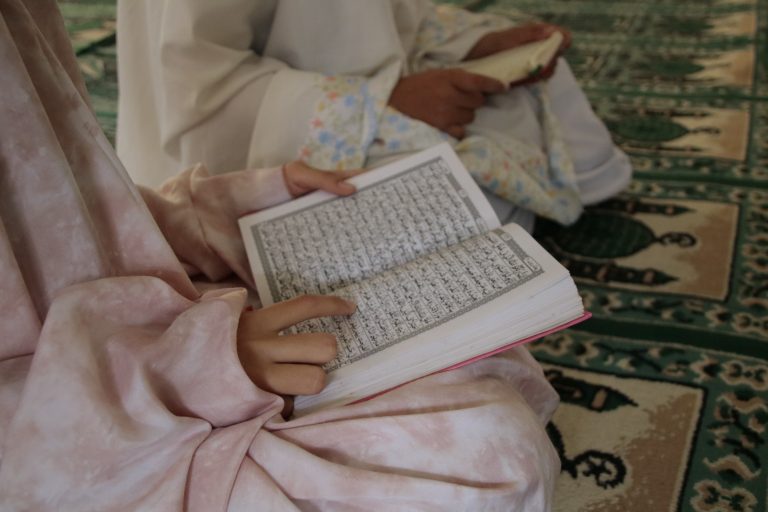Science of Distant Healing & Its Spiritual Insights | Sarkar Healings
The Science and Spirit of Distant Healing
Can Good Intentions Bridge the Gap? Exploring Scientific & Islamic Perspectives
Introduction: Intention Across Distance
We often hear about the power of positive thinking and how our good intentions might help others. Many cultures and spiritual traditions, including Islam, certainly emphasize the impact of sincere prayers for those we care about. However, a fundamental question arises: can these intentions truly reach and affect someone not physically present? Does science offer any validation for the concept of **distant healing**?
This intriguing topic sits at the crossroads of consciousness, physics, and spirituality. While skepticism understandably exists, a growing body of research explores whether focused intention can influence biological systems remotely. Furthermore, from an Islamic perspective, concepts like Du’a (supplication), Barakah (blessing), and Allah’s omnipotence provide a robust framework. This framework helps us understand healing that transcends physical limits. Therefore, this article delves into current scientific evidence on the science of distant healing. We will explore potential explanations and connect these findings to the profound Islamic perspective on remote healing and the **power of intention (Niyyah)**.
Can Intention Be Measured? A Landmark Study
Skeptics often dismiss distant healing as merely coincidence or a placebo effect. However, carefully designed studies attempt to isolate and measure the specific effects of intention. A notable study published in 2008, for instance, provides intriguing results regarding the **power of intention studies**.
The 2008 Couples Study Explained
Researchers examined 36 couples, some involving cancer patients. They created three groups: a “Trained Group” where healthy partners practiced directing compassionate intention, a “Wait Group” tested before training, and a “Control Group” of healthy couples with no training.
During the experiment, they measured **skin conductance** in both partners, who were placed in separate, shielded rooms. Skin conductance reflects sweat gland activity, indicating activation of the **autonomic nervous system (ANS)**. The ANS unconsciously regulates vital functions. Thus, measuring skin conductance offers an objective physiological marker of the body’s internal state.
Sending Intentions Remotely
The “sender” partner focused their intention on the “receiver” partner for brief 10-second periods, followed by breaks. Researchers then compared the receiver’s skin conductance during intention periods versus breaks. They reasoned that a significant difference would suggest intention has a real effect.
Significant Findings
The results were compelling. Across all groups, sending intention consistently produced statistically significant changes in the receiver’s skin conductance compared to breaks (p = 0.0009). This probability is far below the standard scientific threshold (p < 0.05).
Interestingly, while the effect occurred in all groups, it was strongest in the **Trained Group**. This suggests that while intention itself might have an effect, focused training can amplify its physiological impact. Consequently, this study strongly indicates one person’s thought can affect another’s nervous system across distance, outside conscious awareness. Other research has also tentatively explored links between **distant healing evidence** and biological effects, though more investigation is needed.
Nuances and Inconsistencies in Distant Healing Research
However, the scientific picture regarding distant healing is not uniform. We must acknowledge studies finding no significant effect, or even potential adverse outcomes.
Studies Showing Limited or No Effect
For example, some rigorous **remote intercessory prayer studies** have yielded inconclusive results. Research on distant healing for chronic fatigue syndrome or HIV patients largely failed to show clear benefits solely from the intervention.
Potential Adverse Effects?
Intriguingly, a few studies reported potentially negative correlations. While rare and complex to interpret, they highlight the need for caution. We cannot simply assume distant healing always works based solely on current scientific data.
Why the Variability?
This mixed evidence fuels debate. Skeptics point to flawed methods or publication bias. Conversely, proponents argue positive results from well-designed studies indicate a real phenomenon not yet fully understood. Indeed, the variability itself might offer clues about underlying factors.
Exploring Explanations: Physics and Consciousness
For those considering distant healing effects as real, explaining *how* they occur scientifically is challenging. Researchers propose theoretical models, often using analogies from modern physics, though these remain speculative:
- Unknown Energy Signal:** Some hypothesize intention travels via a subtle, undetected **spiritual energy transmission** or biofield. Science hasn’t definitively identified such energy.
- Space-Time Warping:** Analogous to gravity, perhaps focused consciousness creates subtle space-time “warps,” enabling non-local connections. This is highly theoretical.
- Quantum Analogies (Entanglement):** Quantum entanglement shows particles instantly connected despite distance. Some propose consciousness exhibits similar **quantum physics healing** correlations. Importantly, this is an analogy; consciousness is vastly more complex.
- Quantum Analogies (Measurement):** In quantum physics, observation collapses possibilities. Perhaps focused intention acts like measurement, organizing random biological possibilities towards healing. Again, this is a conceptual parallel, related to the **mind-body connection Islam** also acknowledges implicitly.
While intriguing, these physics-based ideas are currently metaphors, not established mechanisms for distant healing.
Bridging Science and Spirit: An Islamic Viewpoint
From an Islamic perspective, effects occurring across distance through non-physical means are entirely coherent. This understanding rests within the framework of faith in Allah’s absolute power (Omnipotence). While science debates mechanisms, the spiritual principles within the **Islamic perspective on remote healing** are clear.
The Power of Du’a (Supplication)
Islam places immense emphasis on Du’a. The Prophet Muhammad (ﷺ) called it “the essence of worship” (Tirmidhi). When a believer sincerely prays for another, present or absent, they appeal directly to Allah, the Controller of all affairs. Crucially, Allah’s power isn’t bound by physical laws or distance. He can bring healing through means we understand and means we don’t. Therefore, **distant healing through prayer** (Du’a) is a core belief, relying on Allah’s intervention, not unknown human energies.
The Centrality of Niyyah (Intention)
In Islam, “actions are judged by intentions” (Bukhari, Muslim). **Niyyah and healing** are deeply intertwined. A sincere, focused, compassionate intention when making Du’a is vital for its acceptance. Scientific studies highlighting focused intention resonate with the Islamic emphasis on sincerity (*Ikhlas*) and heart presence when connecting with Allah.
The Role of Yaqeen (Certainty)
As explored in discussions on Healing by Yaqeen, absolute certainty in Allah’s ability is crucial. Believing firmly that Allah can heal, regardless of distance or prognosis, strengthens the Du’a. This **Yaqeen in divine healing** is perhaps the most critical factor from an Islamic standpoint.
Barakah and Unseen Connections
Islam acknowledges unseen realities and blessings (*Barakah*). Sincere Du’a, righteous actions, and Quranic recitation (as in **Ruqyah and distant healing**) can transmit *Barakah* in ways science cannot measure. Furthermore, the spiritual connection between believers facilitates the efficacy of prayers made for one another.
Therefore, while science seeks physical mechanisms, Islam affirms Allah operates beyond them. Positive scientific findings might be faint echoes of these deeper spiritual realities, suggesting heartfelt intention can have tangible effects, ultimately by Allah’s permission.
Why Does Distant Healing Sometimes Work and Sometimes Not?
Considering both scientific observations and Islamic principles, we can identify potential reasons for inconsistent results:
- Quality of Intention/Sincerity (Ikhlas):** The *sincerity* and *focus* likely matter immensely. A distracted prayer lacks power. Islamic teachings emphasize *khushu* (concentration).
- Capacity of the Intender/Supplicant:** Not everyone has the same spiritual focus or closeness to Allah. The Du’a of a pious person is considered more likely answered.
- Nature of the Illness/Difficulty:** Some ailments might be deeper tests requiring greater effort, prolonged Du’a, or acceptance of Allah’s decree.
- Spiritual Interference or Blockages:** From an Islamic view, negative influences like the **effects of Sihr** or Jinn could interfere. The recipient’s own spiritual state might also act as a barrier. Authentic **Islamic spiritual healing** often involves removing such blockages.
- Divine Wisdom (Hikmah):** Ultimately, Allah responds according to His perfect wisdom. Healing might be delayed, granted differently, or reserved for the Hereafter.
- The Role of Belief (Yaqeen):** The certainty of both sender and receiver plays a crucial role. Doubt impedes. **Faith healing evidence** points strongly towards belief being key.
Thus, effectiveness likely depends on spiritual sincerity, the problem’s nature, the involved parties’ spiritual states, and Allah’s decree.
Conclusion: Faith, Intention, and Trust in Allah
What conclusions can we draw from the current understanding of **the science of distant healing** and its overlap with **Islamic principles**?
Firstly, scientific evidence, though mixed, intriguingly suggests focused intention *can* have measurable effects across distance. This aligns with the Islamic emphasis on sincere Niyyah and Du’a.
Secondly, inconsistent results highlight this isn’t mechanical. Factors like sincerity, spiritual state, and divine wisdom are crucial, echoing Islamic teachings on Du’a acceptance.
Thirdly, belief’s importance emerges strongly from both science (expectancy effects) and Islamic doctrine (**Yaqeen**). Cultivating unwavering **certainty in Allah** appears paramount for unlocking **divine healing belief**.
Practical Advice:
- **Continue Making Du’a:** Never underestimate sincere supplications for others. Trust Allah hears and responds wisely.
- **Focus on Sincerity:** Strive for heart presence and *Ikhlas* in Du’a.
- **Combine with Means:** Use permissible physical means (medicine, therapy) alongside spiritual efforts. Distant healing complements, not replaces, care. Seek authentic practitioners for spiritual matters like **Ruqyah**.
- **Build Your Yaqeen:** Actively strengthen certainty in Allah through knowledge and worship.
- **Be Wary of False Claims:** Avoid those guaranteeing cures via un-Islamic methods. True healing is from Allah.
In essence, while science explores mechanisms, believers possess the most powerful tool: sincere Du’a coupled with unshakeable Yaqeen in Allah Al-Shafi (The Healer). Trust that your heartfelt intentions, offered for Allah’s sake, are never unheard.
Explore Authentic Islamic Healing
Learn more about Ruqyah, Du’a, and strengthening your Yaqeen for holistic well-being. Connect with us for guidance based on Quran and Sunnah.
WhatsApp: +44 7861 392865 | Confidential Consultations






